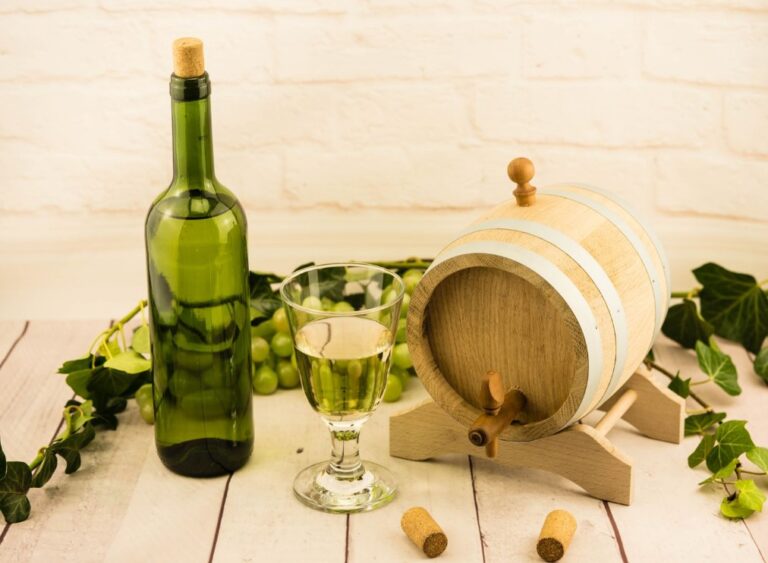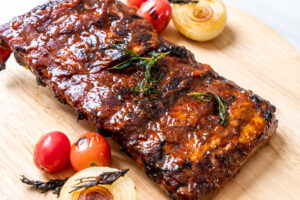
Order your next bottle of Scout & Cellar wine TODAY!
Is there gluten in wine is an extremely common question. Wine is nearly always declared gluten-free as long as it contains less than 20 parts per million of gluten. Sparkling wine and Champagne are both included.
There are a few exceptions to this rule when it comes to wine. Bottled wine coolers and wine with added color or flavoring. Fruit-flavored dessert wines, fall into this category.
Although not all dessert wines and wine coolers include gluten, you can’t bank on their being gluten-free all of the time. Before consuming them, read the label carefully and, if possible, check with the company.
GLUTEN-FREE WINE INGREDIENTS
Wine is manufactured from grapes, which are naturally gluten-free. This is unlike most beer, which is derived from gluten-containing cereals including malted barley, hops, and wheat. Other alcoholic drinks, such as tequila, whiskey, bourbon, gin, and rum, are gluten-free. This is despite the fact that they are made from gluten-containing cereals. This is thanks to the distillation process.
Be aware, that many wine coolers include gluten. While wine coolers may appear to be fun and bubbly variations on wine, they are frequently filled with other chemicals and include gluten. Check the label because it’s possible that the cooler is actually a malt beverage.
GLUTEN AND THE WINEMAKING PROCESSES
While it’s reasonable to assume that wine’s ingredients are gluten-free, there are always exceptions. Certain processed additives and storage procedures may result in gluten in the final product. This can depend on the winemaker and how the wine is prepared. Before you take your next sip, here’s what you should know.
FINING OR CLARIFYING
Nobody wants murky wine, so the process of clarifying ensures that any undesired particles are removed from the wine. Clarifying is also known as fining. Winemakers do this by adding a chemical that binds to the undesirable particles. This causes them to become large enough to filter away. While bentonite clay has become a popular alternative, the majority of fining agents are derived from animals. Examples include egg whites and fish bladders!
Gluten is another fining agent that can be used as an alternative to those produced from animals, despite its rarity. This could result in gluten contamination.
A medical study on the effects of red and white wines clarified with gluten discovered trace quantities of gluten that could be harmful to people with celiac disease or gluten sensitivity. However, another study published in the Journal of Agricultural and Food Chemistry indicated that wines cleared with a gluten-based agent contained very little (or no) gluten.
In either case, if you want to be sure there’s no gluten contamination, you’ll need to contact the winery for a detailed explanation of their fining method.
STORAGE OF WINE
Wine is stored in a variety of containers, ranging from oak barrels to stainless steel. Oak has long been admired for its ability to enhance the colors and tastes of wine while also adding depth and character.
If you’re trying to avoid gluten, you should be aware that the oak barrels are sealed with a little amount of wheat paste which contains gluten. The good news is that the possibility of contamination is extremely low.
For one thing, the seal usually does not come into contact with the wine. Second, any trace quantities of gluten would be far smaller than the FDA’s criterion of 20 parts per million for any product branded “gluten-free.” It’s also worth noting that many wineries now use silicone or wax to seal their casks.
LABELING GLUTEN-FREE
To regulate wine sold in the United States, the Alcohol and Tobacco Tax and Trade Bureau collaborates with the FDA. According to the TTB, wine and other alcoholic beverages can only be labeled gluten-free if they are prepared using gluten-free components.
If the beverage is made using gluten-containing grains, it must be labeled with the phrases treated, processed, or crafted to indicate that it has been gluten-free. Consumers can make an informed decision and understand that a product may contain gluten if it is properly labeled.
KEEP SURPRISING INGREDIENTS AND ADDITIVES IN MIND
Although wine does not contain gluten, it is important to note that many traditional wines now hide a lot of information about what’s truly in the bottle. In fact, over 60 additives are regularly used to change the sight, feel, taste, and texture of wine. This can include artificial colors, flavors, stabilizers, sulfites, and preservatives. However, unlike food labels, wine labels are not required to disclose what is actually in the bottle. That’s why it’s so important to choose your wines carefully.
Choose organic wines or other natural wines made without artificial additives wherever possible. While these items aren’t technically gluten-free, they could be causing some symptoms and reactions.
Look for reputable businesses like Scout and Cellar, which produces wine in small amounts from responsibly grown grapes with no additives. They don’t use common winemaking techniques that alter the chemistry of the wine, unlike larger conventional wineries. Scout and Cellar wines are clean crafted, which means they contain no added sugar, no chemical additions, and have undergone minimal processing.
Summary: Is Gluten In Wine?
Is there gluten in wine is an extremely common question. Wine is nearly always declared gluten-free as long as it contains less than 20 parts per million (ppm) of gluten. Sparkling wine and Champagne, a type of sparkling wine from France, are both included.
There are a few exceptions to this rule when it comes to wine. Bottled wine coolers and wine with added color or flavoring, such as fruit-flavored dessert wines, fall into this category.
Although not all dessert wines and wine coolers include gluten, you can’t bank on their being gluten-free all of the time. Before consuming them, read the label carefully and, if possible, check with the company.







